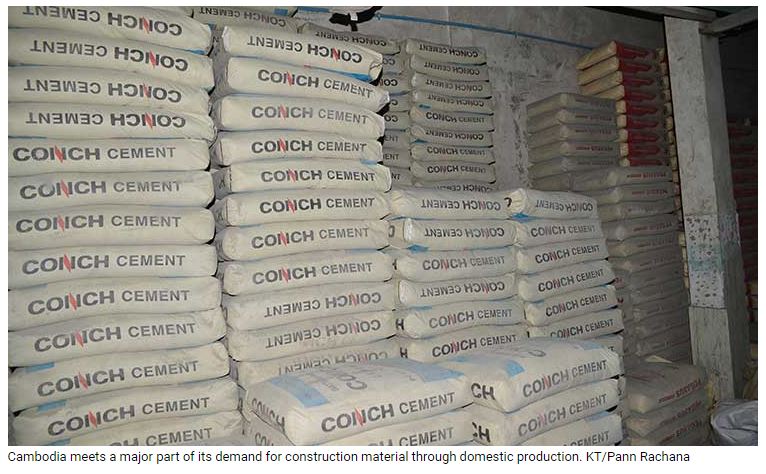Local production helps Cambodia meet 90% of cement demand
In the ongoing economic recovery in Southeast Asia, including Cambodia, post-Covid-19 pandemic, the demand for construction materials like cement is increasing year by year. The government measures to improve and build physical infrastructure are only adding to raising the demand.
The demand for cement will continue to grow in the next 10 years, says the “Research Report on Southeast Asia Cement Industry 2023-2032”, by ResearchAndMarkets. The report focused on ASEAN member states Singapore, Thailand, Philippines, Malaysia, Indonesia, Vietnam, Myanmar, Brunei, Laos and Cambodia.
While Cambodia meets a major part of its demand for this vital construction material through domestic production, development of the cement industry differs to a large extent in the Southeast Asian region.
There are five cement production units in the Kingdom and together they meet around 90 percent of the domestic demand, according to a recent Cambodian Cement Manufacturing Association (CCMA) report. The rest, 10 percent of the demand, is met through imports, mainly from Vietnam, India and Germany.
During January-November 2022, these five units together produced 7.7 million tons of cement, which is very much near their annual production capacity. While four cement plants are in Kampot province, the fifth unit is located in Battambang province. A sixth cement manufacturing unit in Kampong Speu is likely as a feasibility study is being conducted for it.
In 2021 these production units produced 8.9 million tons of cement, which was 400,000 tons more than 8.5 million tons produced in 2020, stated the CCMA report.
While the annual cement production capacity of Vietnam is more than 100 million tons, several Southeast Asian countries basically do not produce cement and related products and depend on the import of the commodity. Apart from meeting the domestic market demand, Vietnam also exports a large amount of cement clinker to China every year.
According to the ResearchAndMarkets report, economic growth and the growing construction industry in Southeast Asia will increase the demand for cement, which will also promote the development of the cement manufacturing industry.
Pointing to the development of the cement industry in the region, the report says, the availability of cheap labour and softer land costs have attracted a large number of foreign investors to shift their production capacity to Southeast Asia, and the expansion of foreign trade has also promoted the development of its cement sector.
With a total population of over 600 million by the end of 2021, Southeast Asia has an overall economic growth rate higher than the global average and is considered one of the key drivers of future global economic growth, according to the report publisher’s analysis.
Stating that five cement factories in Cambodia produce about 9 million tons per year, Prime Minister Hun Sen pointed to the high demand for cement in the Kingdom. The Prime Minister said this while speaking at the groundbreaking ceremony for the reconstruction and upgrade of two roads in Kampot and Kep provinces in December.
To meet the high demand for cement, the Kingdom requires additional investment. “According to the estimation, we still need to use cement, because it is not just used for building houses, but also being used for building road systems,” he said.
However, a slowdown in the building construction sector in Cambodia may impact the uptake of cement in the coming years. Of late, because of the sluggish inflow of foreign investment, the expansion of the construction and realty sectors has slowed down. In 2022, the sector clocked a 0.5 percent growth rate, below the 0.8 percent expansion rate of 2021, according to the annual report of the National Bank of Cambodia (NBC) for 2022.
Source: https://www.khmertimeskh.com/501236211/local-production-helps-cambodia-meet-90-of-cement-demand/


 English
English




